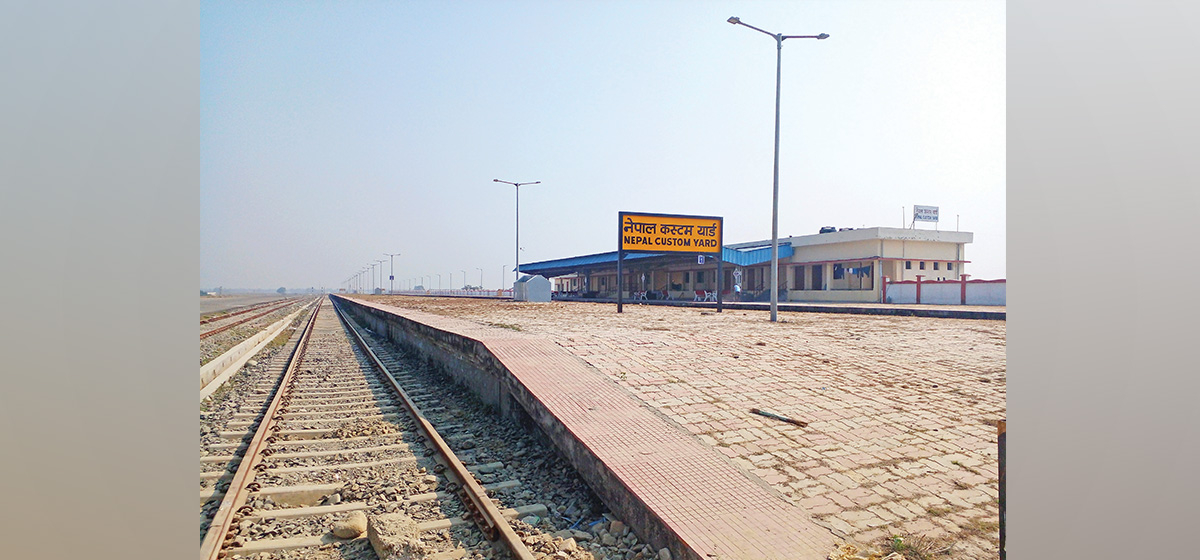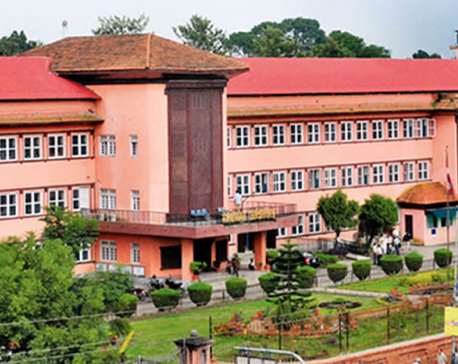
OR
Large developmental infrastructure bring hope of prosperity in Koshi Province
Published On: April 30, 2023 08:30 PM NPT By: Republica | @RepublicaNepal

BIRATNAGAR, April 30: With the beginning of the construction of large development infrastructure, the door of prosperity is opening in Koshi Province.
A wave of development has started to be seen in Koshi Province as the major infrastructure works in road, hydropower, health, education and agriculture sectors are progressing rapidly.
The construction of a six-lane road connecting Jogbani and Dharan along with the construction of Jogbani-Kimathanka Koshi Highway, Bathnaha-Katahari Railway, Kakarvitta-Inaruwa Railway, the Madan Bhandari Highway, and the Mid-Hill Highway, which is being built to connect the districts of the hill region, have rekindling hope to forward the construction of large road infrastructure in Koshi Province.
The construction of a road connecting Nepal-India via Jogbani and the road connecting Nepal-China border to Kimathanka is currently underway. Koshi Highway will be established as the shortest route connecting China-India after this road is operational. Professor Dr PK Jha, who is an expert in economics, says, “Through this route, Nepal can benefit greatly by establishing trade networks with China and India.”
He said that this route will prove to be a milestone for industry, trade, tourism and prosperity of Koshi Province. Jha said, “If trade starts between India and China through the Jogbani and Kimathanka route, Biratnagar will be a transit point for trade. Along with this, a large number of tourists will visit Koshi Province, industries will not have to rely only on India for raw materials and the gateway to export local Nepali products to China will also open.”
A wave of development has started in Koshi Province as the big infrastructure projects related to road, hydropower, health, education and agriculture sectors are progressing rapidly.
Similarly, the construction of Bathanaha-Katahari Railway has reached its final stage. Trains can be operated immediately to the Biratnagar Integrated Customs CheckPoint (ICP) railway station. The transportation problems faced by the industrialists of this region for a long time will be solved when this railway comes into operation.
Currently, industrial raw materials imported from third countries including India must be brought through the Sunsari-Morang Industrial Corridor by road. Because of this, the industrialists here are forced to bear the expensive transportation costs.
Nabin Rijal, president of Morang Merchant’s Association, says that the competitiveness of industries in Koshi Province is weakening due to the high cost of transportation while importing raw materials.
He said that since the railway is the second cheapest route in the world after waterways, they are taking initiatives with the government to immediately put the railway from Bathanaha to Biratnagar ICP into operation. Rijal said, “We have been repeatedly demanding the government to start the railway connecting India's Bathnaha to Biratnagar's ICP.”
Rijal said that they have taken initiatives not only with the Nepal government but also with the Indian government for the operation of the railway. According to him, the Indian ambassador who came to Biratnagar a few months ago was also requested to put the railway into operation immediately. The Indian ambassador gave assurance to the industrialists of Biratnagar that he was ready to hand over the railway, which had been completed up to ICP, to Nepal. Rijal said that the railway is important for the development of industry and trade in this region.
He said, “The cost of transporting goods will decrease through the railway, so the competitiveness of the industrial products of this region will increase.”
Along with roads and railways, the development of the hydropower sector in Koshi Province is also progressing rapidly. The Arun III hydropower project has reached the final stage of construction. It is the largest hydropower project constructed in Koshi Province so far.
With the completion of the 900 MW Arun III hydropower project being built by an Indian company, preparations have already started for the Upper Arun and Arun 4 hydropower projects.
At present, electricity production in Koshi Province has reached 418 MW, while 1,600 MW of projects are under construction. According to the data of the Department of Electricity Development, there is a potential of 34,215 megawatts of electricity production in Koshi Province. The 86 MW Solu Khola Dudhkosi hydroelectric project built by the private sector in Koshi Province is preparing to start commercial production.
Not only domestic investors but also foreign investments have started entering the hydropower sector of Koshi Province. The 900 MW Arun III hydropower project, which is about to be completed in Koshi Province, is being built with the investment of the Government of India.
An agreement has already been reached between the Government of Nepal and the Government of India to build Arun 4 with the investment of the Government of India. Similarly, the World Bank is going to invest in Upper Arun. About 30 years ago, the World Bank did not invest in Nepal’s hydropower sector after Arun withdrew from the third party due to internal disputes in Nepal.
Hydropower sector has been seen as the basis of prosperity of this province. A lot of foreign income can be earned by exporting the electricity produced from these projects to countries like India and Bangladesh.
Not only this, there is also the possibility of creating jobs by operating large industries in Koshi Province by providing electricity at subsidized rates to the domestic industries. Industrialists say that if Nepal’s industries get subsidies on electricity, their products will be cheaper and they will be able to compete in the international market.
Avinash Bohora, central member of the Federation of Nepalese Chamber of Commerce and Industry, said that the Nepali industry can be made competitive by providing electricity at a cheaper rate. “If the cost of electricity can be made cheaper, the cost of production of Nepali industries will decrease and they will be able to compete with the products of Indian industry,” Bohora said.
Another area of potential in Koshi Province is tourism. All three levels of government are trying to develop the tourism sector. Religious tourism also has considerable potential in Koshi Province.
The cave of Halesi Mahadev, where Lord Shiva is believed to have hid while being chased by Bhasmasur, is also in this province. Similarly, the religiously important temple of Goddess Pathibhara, Arjunadhara, which is associated with the myth of Lord Arjun shooting an arrow in the Mahabharata period, is also located in this region.
Historic places like Pindeshwari, Dantakali, Kichhak Badh, then king Birat’s palace and hundreds of Shakti Peeths, monasteries are situated in this province.
Naturally scenic spots are considerable in numbers in the Koshi region. Bhedetar, where visitors can take a respite from the scorching heat of the Terai, is easily accessible, while Kanyam of Illam with beautiful tea gardens also falls in this province.
Koshi Province also has the world's highest peak, Mount Everest, to Nepal's lowest point, Kachankawal in Jhapa. There are 13 eco-friendly tourist destinations and 13 trekking trails located in this Province.
Stakeholders believed that if they develop the religious and touristic places of Koshi Province and attract tourists, there is a possibility that the economy of this region can be transformed through tourism.
Similarly, another sector with great potential in Koshi Province is agriculture and industry. Koshi Province has 783,000 hectares of arable land. The hill districts of Koshi Province have the potential to produce sufficient quantities of vegetables, fruits and medicinal herbs.
If the agricultural products produced in these areas are easily accessible to the market and the processing industries based on agricultural products are developed, then the agricultural products of this area will surely get both market and price. The development of large industries based on agricultural produce seems to fulfill the vision of a self-sufficient economy. Agriculture-based industries are minimal in Koshi Province. Many industries here depend on foreign raw materials.
While large projects are being conducted in the fields of roads and hydroelectricity, the investments of the public and private sectors in large projects in the fields of agriculture, industry and tourism are shrinking. Imported goods have started entering the villages. The villages are becoming more dependent. If the vision of a self-sufficient economy is to be realized, it is necessary to bring the large projects of agriculture industry and tourism into operation.
A large number of jobs can be created at the local level if agricultural production is increased, large industries based on agriculture are brought into operation and large infrastructures of tourist attractions are built.
You May Like This

Koshi Province reports 488 fire incidents in three months
JHAPA, March 21: Incidents of fire have escalated with the start of the dry season. As many as 488 fire... Read More...

SC nullifies vote of confidence received by Koshi Chief Minister Thapa
KATHMANDU, Sept 7: In a significant development, the Supreme Court (SC) has invalidated the vote of confidence received by Chief... Read More...

JSP to stay neutral on CM Karki’s vote of confidence in Koshi provincial assembly
BIRATNAGAR, June 29: Janata Samajwadi Party (JSP) has decided to remain neutral on the issue of giving a vote of... Read More...





Just In
- CM Kandel requests Finance Minister Pun to put Karnali province in priority in upcoming budget
- Australia reduces TR visa age limit and duration as it implements stricter regulations for foreign students
- Govt aims to surpass Rs 10 trillion GDP mark in next five years
- Govt appoints 77 Liaison Officers for mountain climbing management for spring season
- EC decides to permit public vehicles to operate freely on day of by-election
- Fugitive arrested after 26 years
- Indian Potash Ltd secures contract to bring 30,000 tons of urea within 107 days
- CAN adds four players to squad for T20 series against West Indies 'A'













Leave A Comment